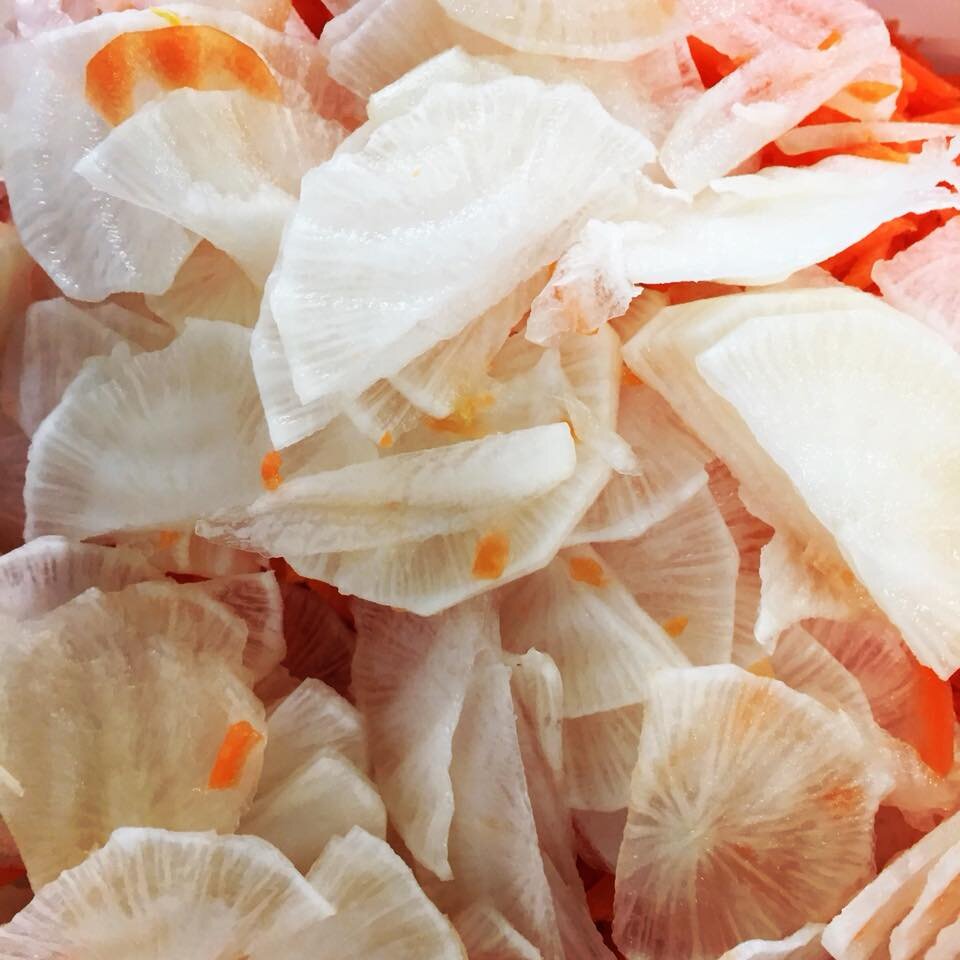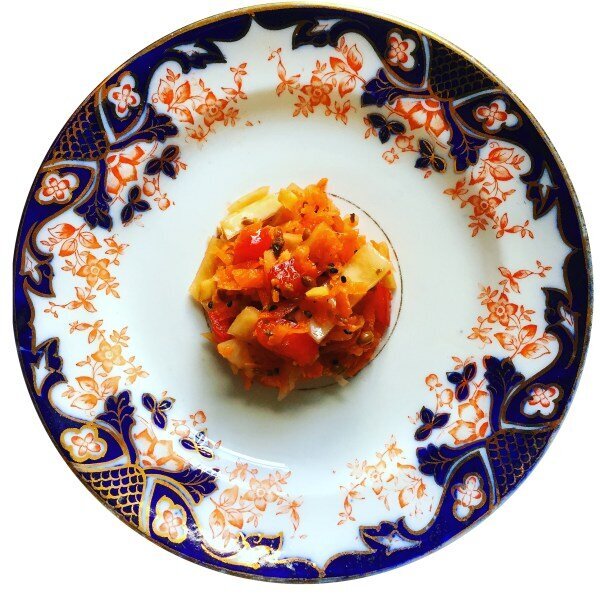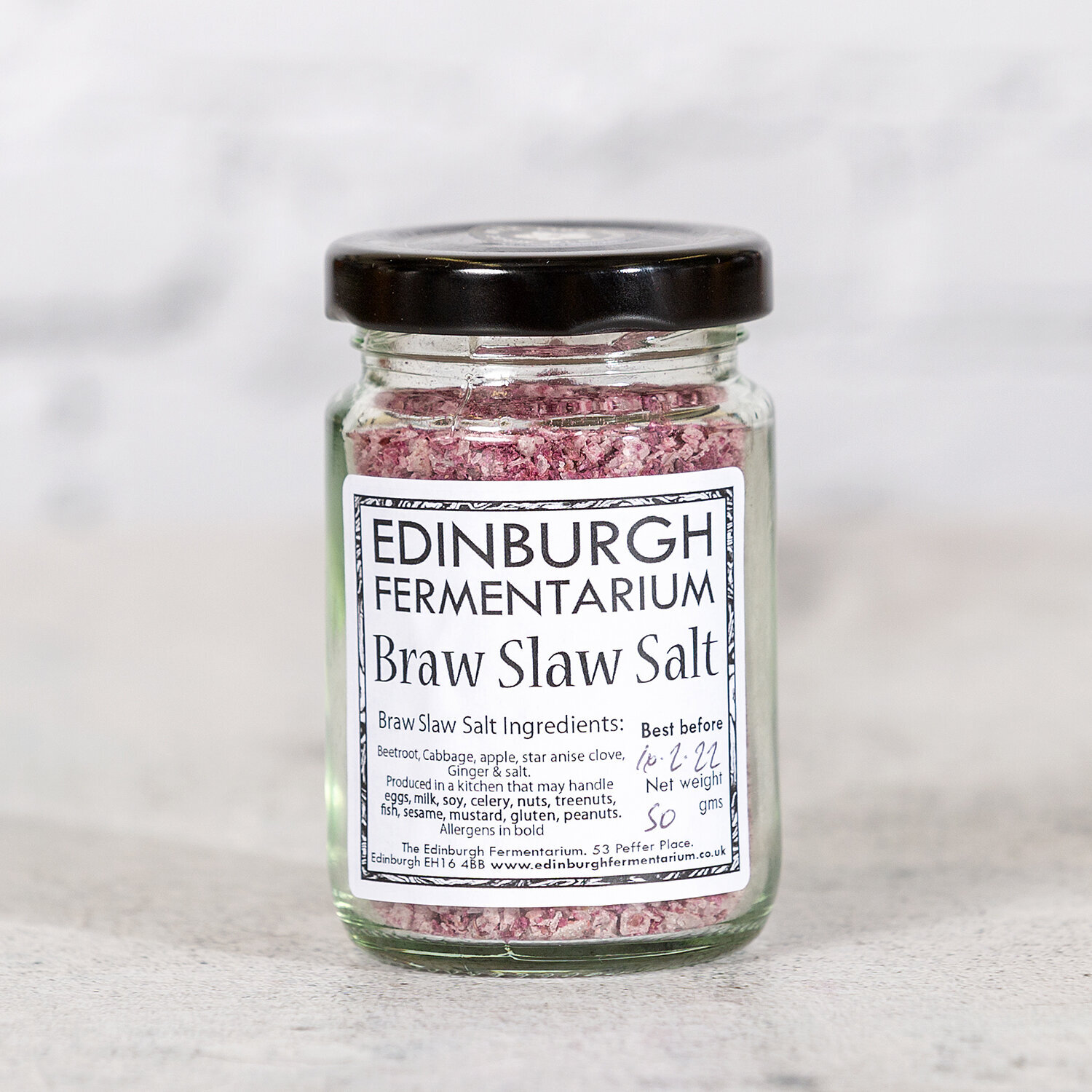
Kimchi, Kraut and Cultural Appropriation.
Cultural appropriation can be defined as
“The unacknowledged or inappropriate adoption of the customs, practices, ideas, etc. of one people or society by members of another and typically more dominant people or society.”
Oxford Dictionaries 2017 entry
Cultural Appropriation and EF
It’s been four years since Ruth from Edinburgh Fermentation first took the steps from sharing recipes created at home with friends and family to selling her range at farmers markets, and subsequently in retail and online. As our small team has grown, so has the depths of our kitchen conversation chats and one subject that has been in discussed and on our minds recently has been that of cultural appropriation. We realise that is not enough to attribute our current product range to the mixing of cultures through globalisation, travel and discovery, nor is it enough to simply acknowledge lack of understanding or naivety when we started the business. Therefore, as a team, we wish to take some steps to address this and ensure we pledge to act responsibly as advocates for cross-cultural fermentation practitioners in the future.
What is cultural appropriation?
Cultural appropriation can be defined as “The unacknowledged or inappropriate adoption of the customs, practices, ideas, etc. of one people or society by members of another and typically more dominant people or society.”
In the food industry this is especially problematic where white chefs or producers adopt and monetise a cuisine or product that is not traditionally ours and therefore profit from another culture. This is particularly important as the structural racism which exists in our society may often inhibit chefs, cooks and food producers from non-dominant cultures from having access to these opportunities.
The Story of our Cracking Kimchi
Our first foray into lacto-fermentation was three recipes; Braw Slaw, Stoatin’ Sauerkraut and Cracking Kimchi. It made sense for us to make use of the often abundant supply of cabbage carrot and beetroot within Scotland in our recipes as part of Ruth’s quest for better gut health.
The first ever recipe of a kimchi Ruth had made was vegan, and at the time she was not so keen on fish sauce (oh, how times have changed) and her partner Andy, did not eat garlic or alliums. Using a combination of napa cabbage, white cabbage, mooli, bell pepper, chilli and ginger the recipe then varied the texture by adding chopped and grated carrot and the flavour profile adapted with tangy spices of nigella, coriander, cumin. And so, although definitely based on a concept of kimchi, and very popular with tasters, it’s far from the expectations of a traditional Korean ‘mak’ kimchi 막김치. Imagine if you went on holiday and found the traditional Scottish dish Cullen Skink on the menu, ordered it and were served a fishy, potato based sweet milk-shake in a plastic bottle. Insulting, and hardly authentic right? That’s why we think globalisation should n’t be an excuse to ignore the importance of culture.
Tales of Korean Kimchi and Culture
Part of the beauty of being a bit of a food nerd is that when you start to research food and culture you uncover some wonderful tales and resources, then find more things you want to research and taste. You realise just how much we still have to learn about other cultures, food and traditional knowledge. These are some of our favourite resources on Korean kimchi and culture that we would like to share with you.
Our pledge for the future
We’re aware that language is important and aim to ensure that the language we use does not reinforce cultural stereotypes or micro-aggressions
To acknowledge the origins of recipes and cultural traditions in our fermentation classes
Make amends where we need to by renaming or delisting products when necessary or appropriate for a fledgling business, or by providing additional information.
Focus our innovation in developing delicious new products that are culturally appropriate to Scotland; making use of our wonderful natural larder whilst embracing our own cultural traditions and the art of fermentation.
Build collaborative relationships with other individuals and organisations with similar values that can provide benefits to the original communities of the products that we sell.




